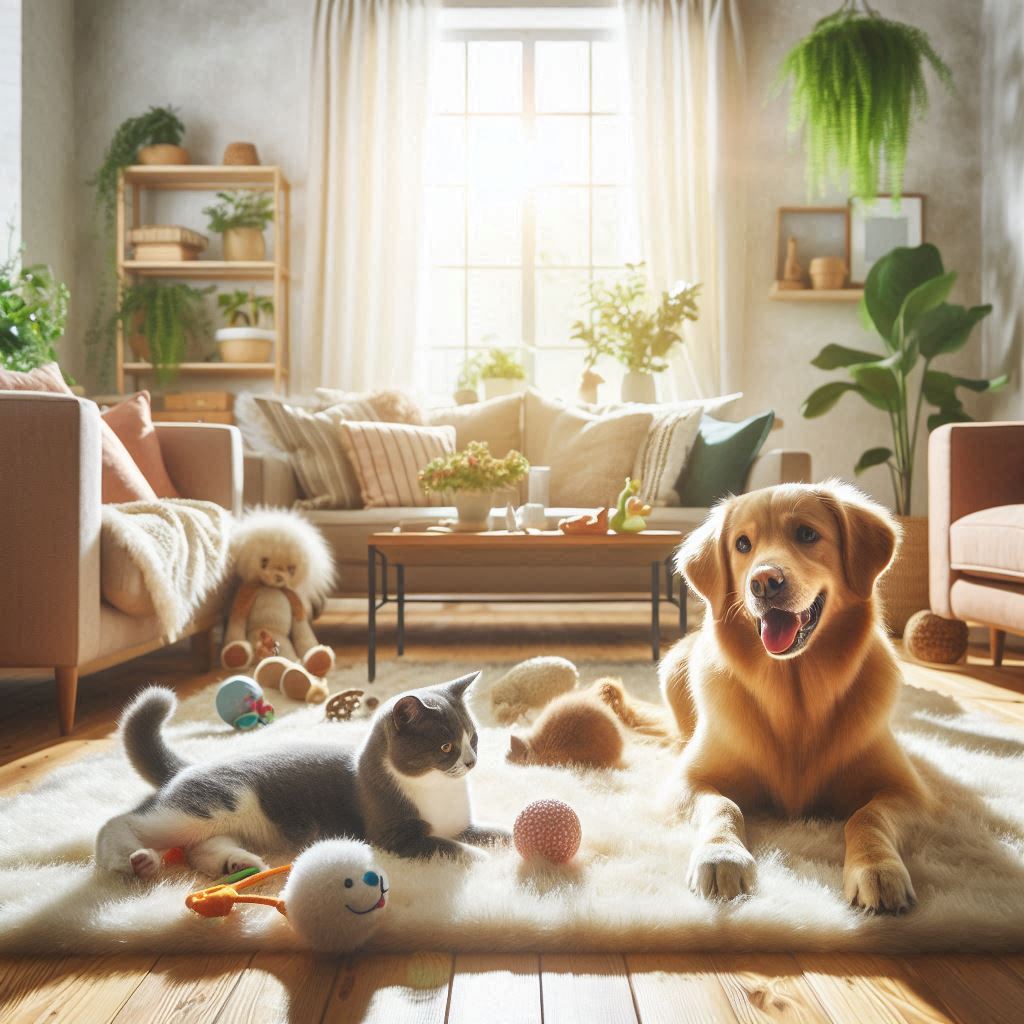Welcoming a new pet into your home is an exciting experience filled with love, fun, and companionship. But just like baby-proofing for a toddler, your home needs to be pet-proofed to ensure your furry friend’s safety and well-being.
From hidden hazards to common household items that pose threats, this guide covers everything you need to know about creating a safe and pet-friendly home environment for dogs, cats, and other small pets.
1. Understand Your Pet’s Needs and Behaviors
Each pet species—and even breed—has its unique habits and challenges.
- Puppies and kittens are naturally curious and love chewing on things.
- Senior pets may struggle with mobility and require more comfort.
- Rabbits or guinea pigs can easily squeeze into tight spaces and gnaw on wires.
Knowing your pet’s behavior helps you anticipate risks and prepare your space accordingly.
2. Pet-Proofing the Living Room
The living room is often a central area for the whole family—including pets.
Safety Tips:
- Hide or cover electrical cords to prevent chewing.
- Anchor furniture or shelves to avoid tipping.
- Remove toxic plants like philodendrons, pothos, and lilies.
- Keep small objects out of reach (coins, batteries, kids’ toys).
Opt for pet-friendly flooring like tile or laminate that resists scratches and is easy to clean.
3. Making the Kitchen Safe for Pets
Kitchens can be dangerous for pets due to food hazards, sharp tools, and cleaning products.
To-Do Checklist:
- Use child-proof latches on lower cabinets.
- Secure trash bins with lids or place them inside cabinets.
- Keep human food—especially toxic ones like chocolate, grapes, onions, and garlic—away from counters.
- Store knives and breakables safely.
Never leave food cooking unattended, and don’t let pets jump on hot stoves or ovens.
4. Pet-Friendly Bedroom Setup
While bedrooms seem harmless, they can still pose risks for pets.
- Keep loose items like hair ties, jewelry, and medications in closed drawers.
- Avoid letting pets play with charging cables or hanging cords.
- Create a cozy sleep space using a crate, cushion, or designated pet bed.
- Avoid using scented candles or diffusers, which may contain harmful essential oils.
5. Bathroom Safety for Pets
Pets may wander into bathrooms and get into trouble, especially with chemicals and water.
Safety Tips:
- Always close the toilet lid to prevent drinking.
- Store cleaning supplies, razors, and medications in secure cabinets.
- Don’t leave open water buckets or tubs unattended.
- Use non-slip mats to prevent falls on wet floors.
6. Outdoor and Balcony Pet-Proofing
If you have a backyard or balcony, don’t assume it’s automatically pet-safe.
- Inspect fencing for holes or weak spots.
- Block off railing gaps on balconies to prevent falls.
- Remove or restrict access to pesticides, insect traps, or fertilizers.
- Provide shade and water, especially during hot weather.
- Avoid planting toxic flowers like azaleas, daffodils, or oleanders.
For apartment balconies, consider installing pet-proof mesh or fencing.
7. Create a Designated Pet Zone
Pets need a space to call their own where they feel comfortable and secure.
Here’s what to include:
- A comfy bed or crate with blankets
- Toys and chew items to prevent boredom
- Access to clean water and food
- For cats, add a scratching post or litter box
Place this zone in a quiet area of your home where your pet can relax without stress.
8. Eliminate Common Household Hazards
Some everyday items that seem harmless to us can be dangerous for pets.
Common Pet Hazards:
- Houseplants: Lilies, poinsettias, aloe vera
- Choking Hazards: Rubber bands, string, small toys
- Medications: Even a small dose of painkillers or vitamins can be toxic
- Plastic bags: Risk of suffocation or chewing
Do a regular sweep to check for new or fallen items that could harm your pet.
9. Use Pet-Safe Cleaning Products
Many standard cleaners contain harmful chemicals that can irritate your pet’s skin, eyes, or lungs.
Opt for:
- Enzymatic cleaners for accidents
- Vinegar and baking soda mixtures
- Pet-safe floor cleaners without bleach or ammonia
Always ventilate the area after cleaning and store products well out of reach.
10. Regular Maintenance and Supervision
Creating a safe home isn’t a one-time job—it’s an ongoing process.
- Inspect your home weekly for chewed wires, loose objects, or spills.
- Rotate toys and remove damaged ones.
- Stay alert for signs of stress or discomfort in your pet.
- Install pet cameras or baby monitors if you’re away frequently.
Your eyes and attention are your pet’s best defense against unexpected dangers.
Final Thoughts
Creating a pet-friendly home is more than just pet-proofing—it’s about making your space a safe, loving, and enriching environment where your pet can thrive.
By following these ten steps, you’re not just avoiding hazards—you’re actively showing your pet they’re a cherished member of your family.
